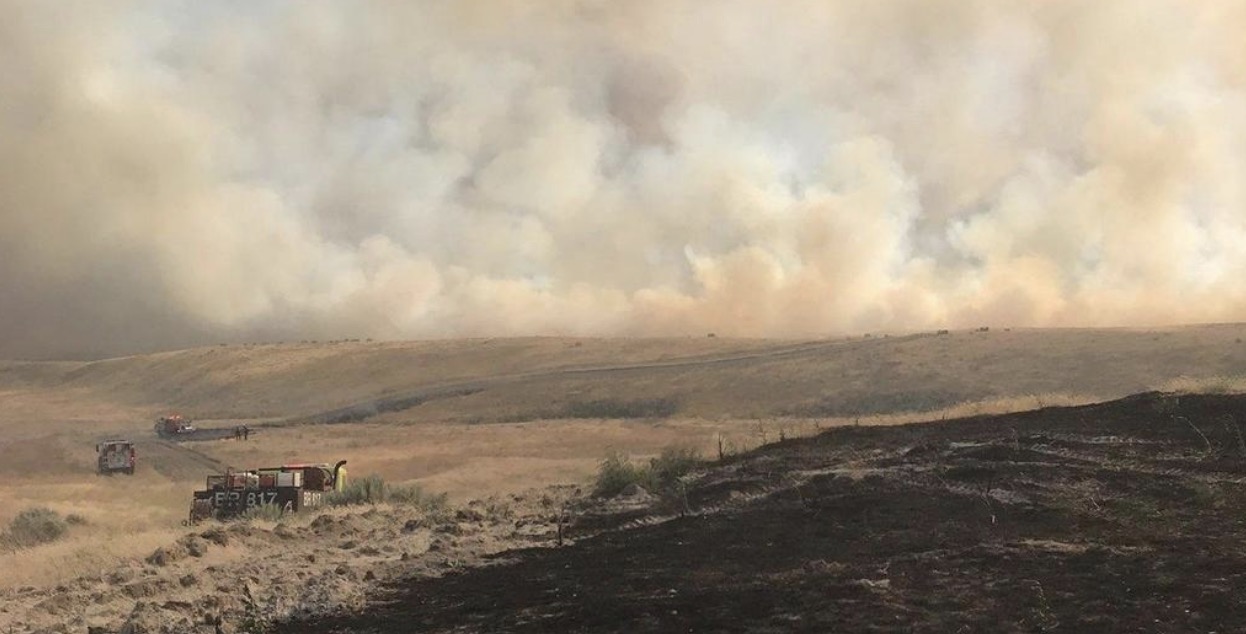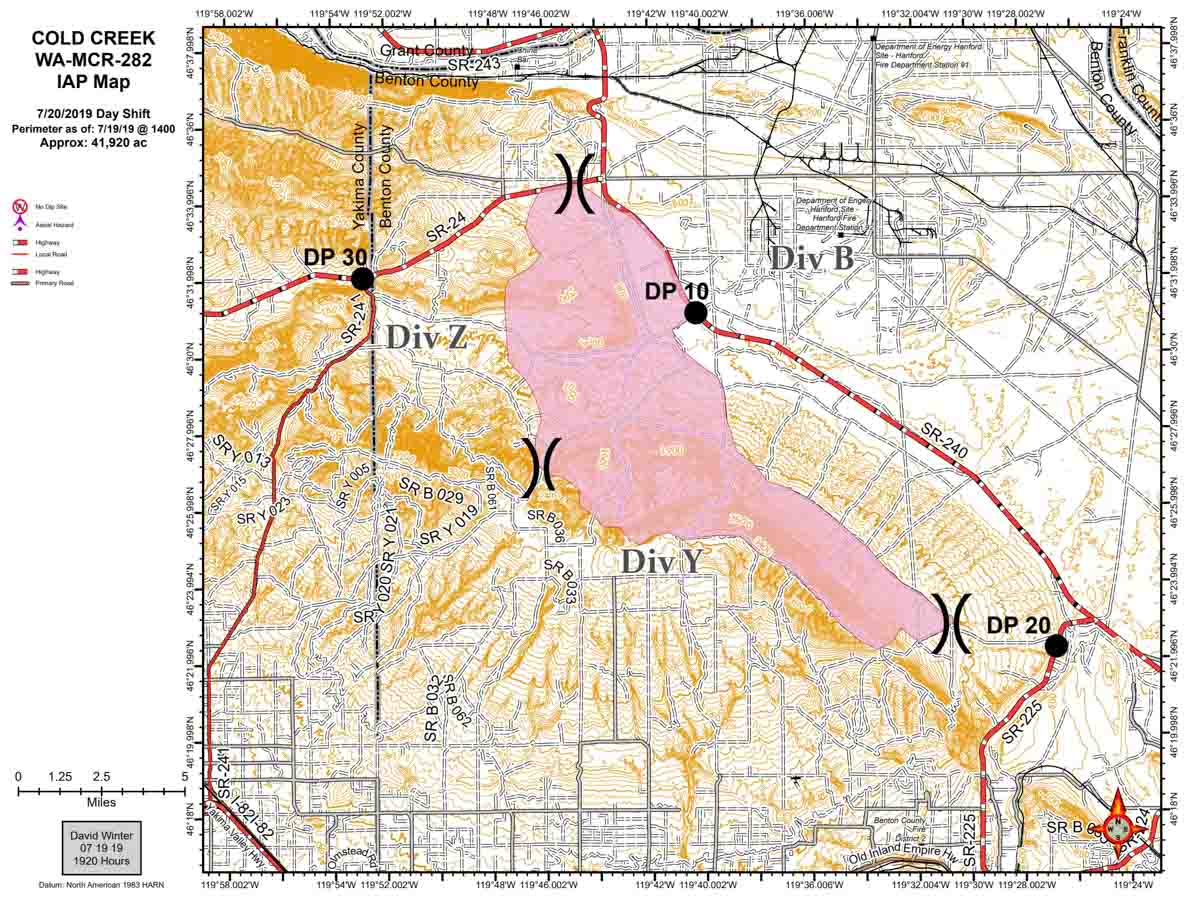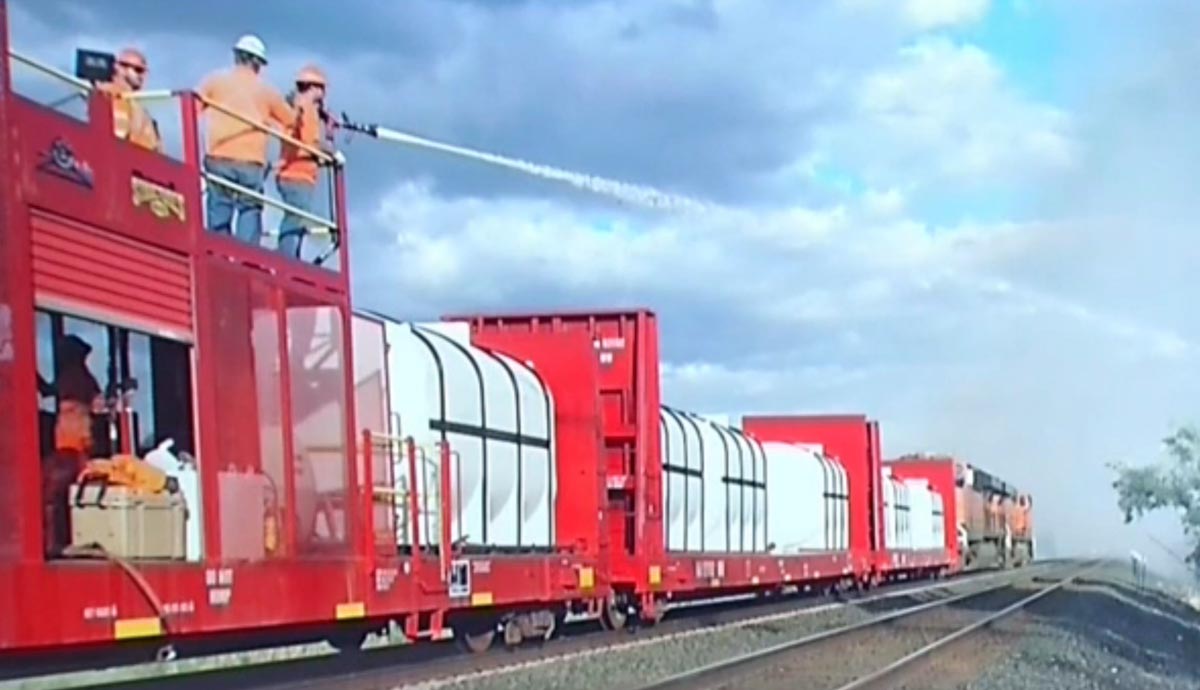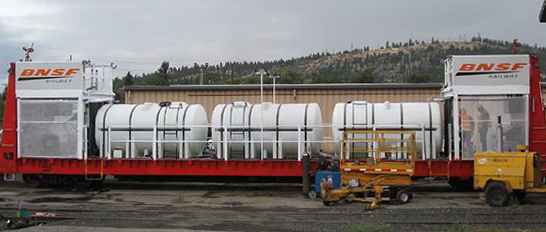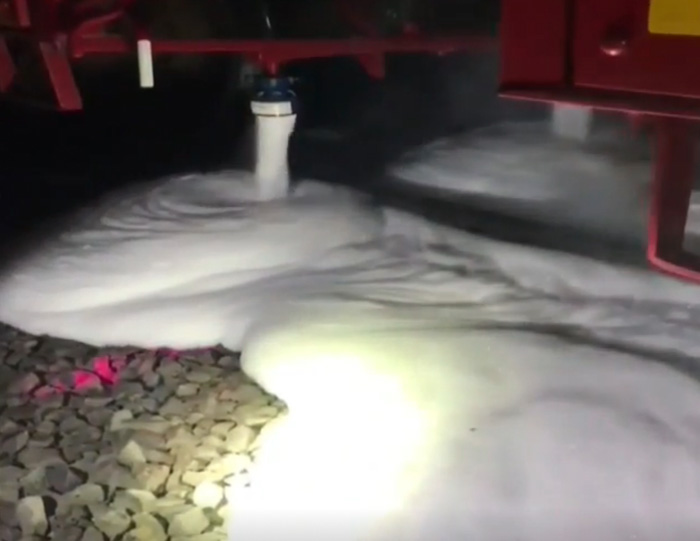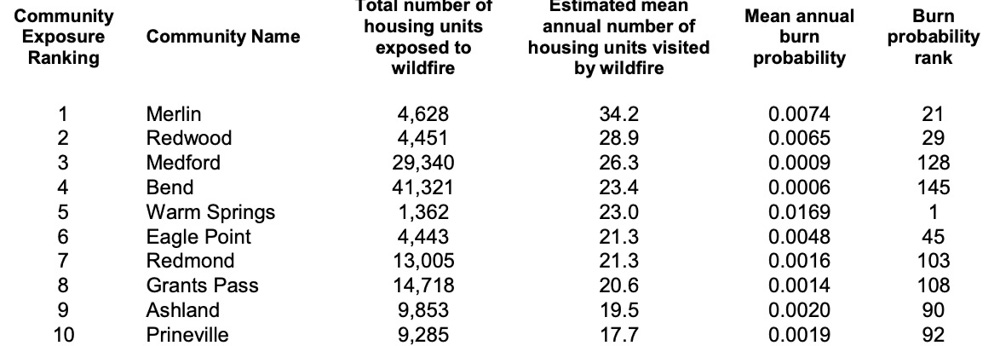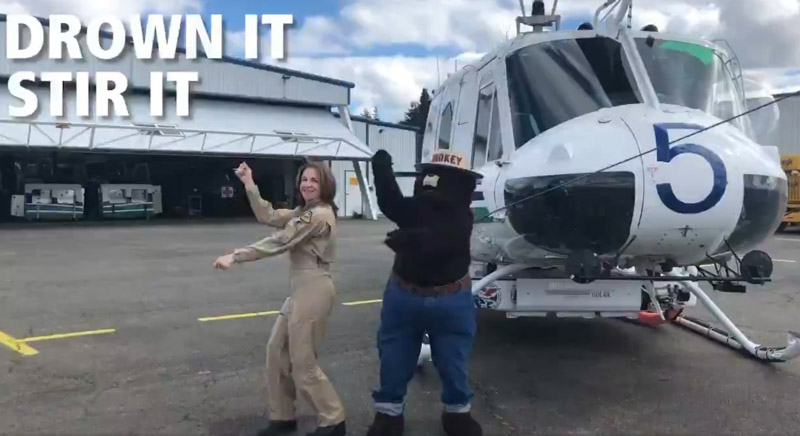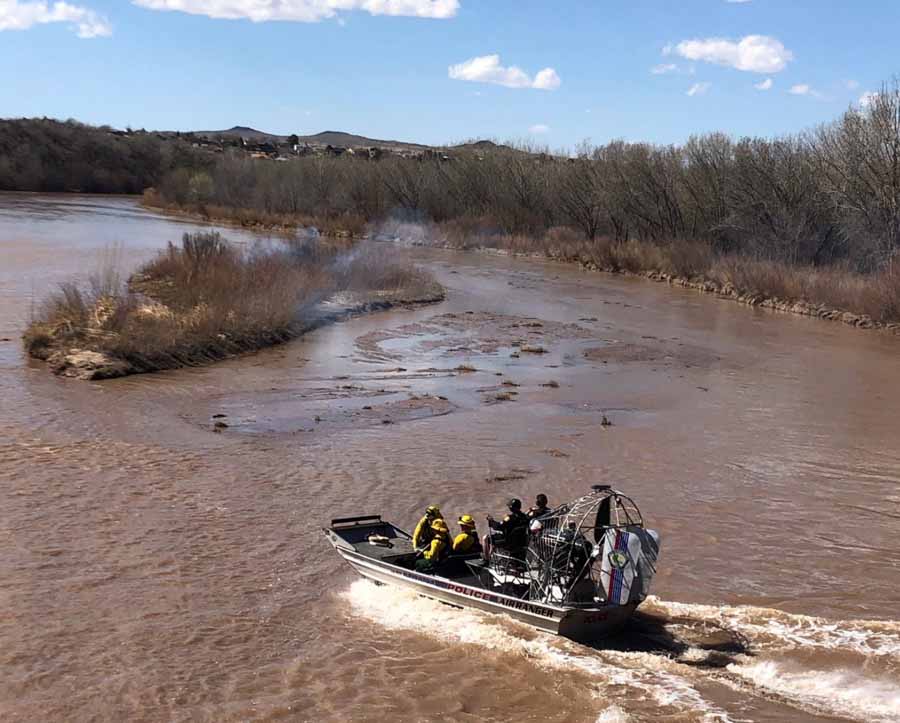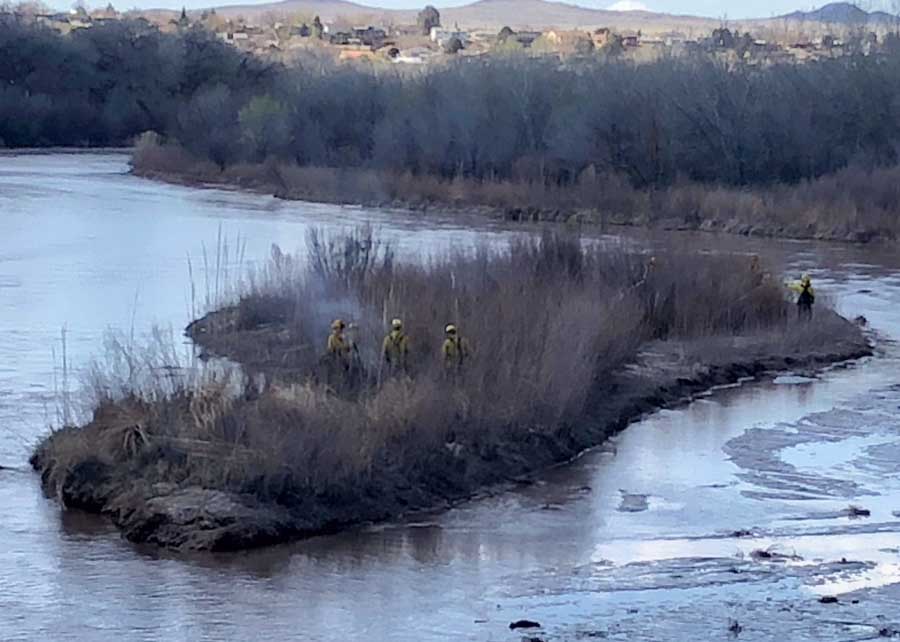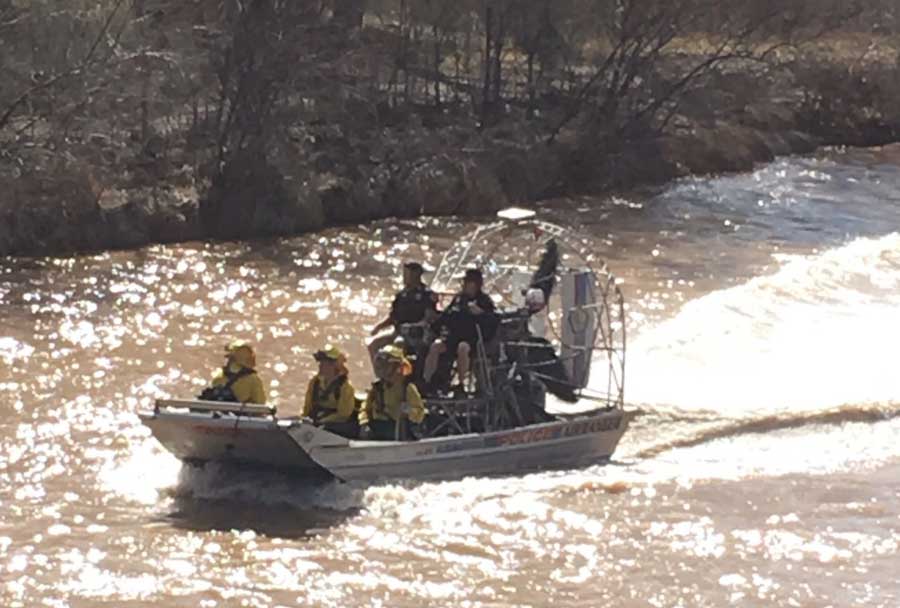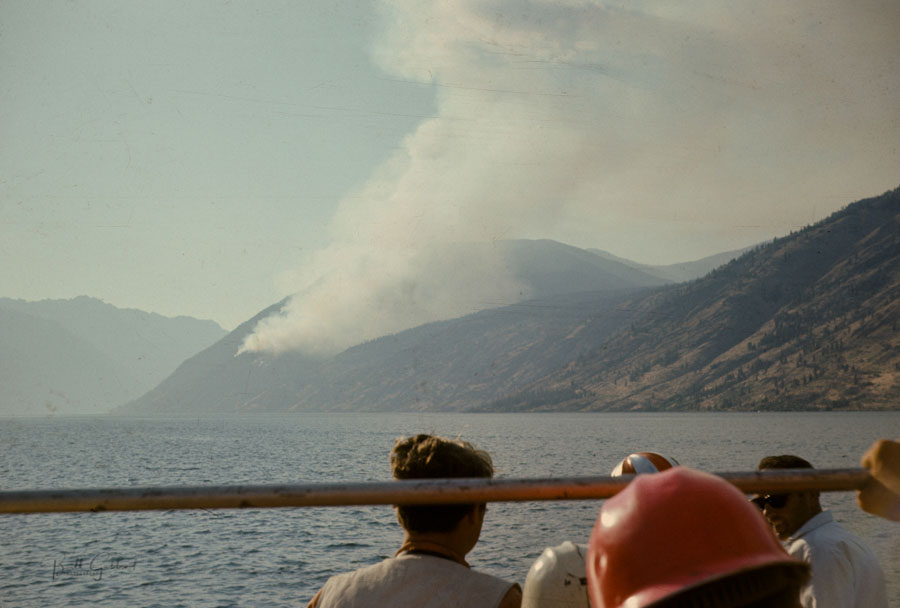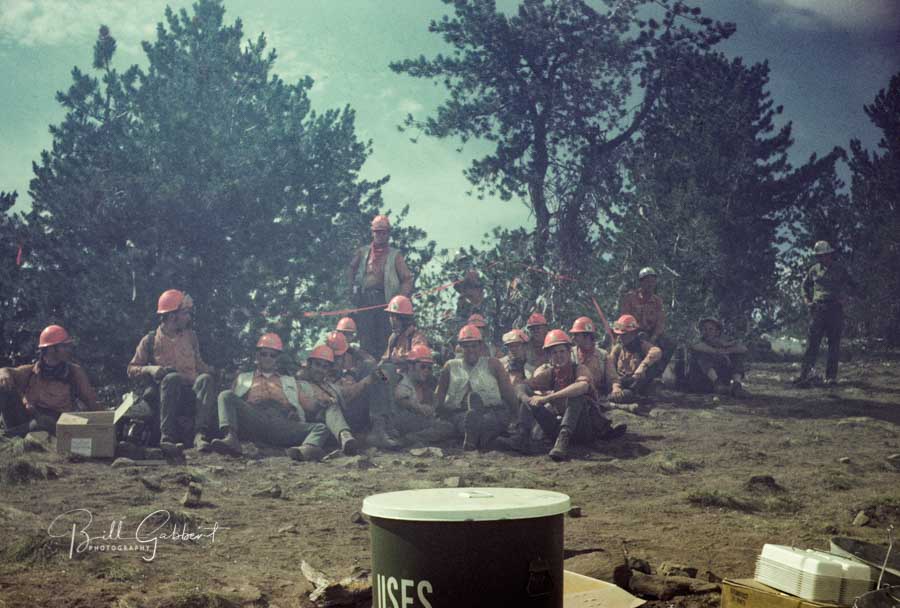
(UPDATED at 5:50 p.m. PDT August 3, 2019)
In an update at 2 p.m. Saturday fire officials reported that the Williams Flats Fire 15 miles east of Grand Coulee, Washington had grown to 8,200 acres. (see map above)
On Saturday firefighters constructed containment lines to protect the valley floor and worked on anchoring the southern perimeter of the fire, which is spreading east toward Redford Canyon. That area was logged five years ago leaving behind slash fueling the fire. Steep slopes, limited roads, and primitive road conditions are hampering control efforts.
Tribal Natural Resources Officers are patrolling Lake Roosevelt Recreation Area to keep boaters safe as three Fire Boss water-scooping single engine air tankers obtained water from the Columbia River.
Other resources on the fire include:
- 3, large air tankers
- 1,Type 1 helicopter
- 4, 20-person hand crews
- 2, 12-person hand crews
- 3, dozers
- 12, Type 6 fire engines, and
- 5, water tenders
- For a total of 132 personnel
(Originally published at 10:02 a.m. PDT August 3, 2019)
The Williams Flats Fire in Northeast Washington burned well over 5,000 acres during the first 25 hours after being reported at 3:23 a.m. Friday August 2, 2019.
Saturday morning fire officials said it was 5,640 acres, but satellite data from 4:18 a.m. PDT on Saturday indicates it may have burned an additional 1,000 acres. (see map above below)

Exhibiting extreme fire behavior during Red Flag Warning Conditions, the blaze spread east along the Columbia River 8 miles southeast of Keller and 15 miles east of Grand Coulee, threatening structures. Evacuations are occurring, according to the Northwest Area Coordination Center.
At 6 p.m. Saturday a Type 2 Incident Management Team led by Incident Commander D. Johnson will assume command.
The fire is within the Hellgate Game Preserve on the Colville Indian Reservation.
The fire initially consumed primarily grass, but moved into heavier vegetation. It is fueled by fallen dead trees, grass, sage, and bitter brush, exacerbated by limited access along the Columbia River. Initial suppression efforts included building hand lines, dozer lines, and working from existing roads. Helicopters and fixed winged aircraft cooled hotspots on Friday to allow ground forces time to engage. On-the-ground firefighters are dealing with extremely steep rocky slopes and rattlesnakes.
Weather
On Friday the fire was pushed by 5 to 12 mph winds out of the southwest and west gusting at 15 to 25 mph, but after midnight the direction reversed to come out of the east, according to the Wellpinit weather station south of the fire. Friday’s temperature reached 90 degrees with a relative humidity of 21 percent.
The forecast for Saturday calls for 84 degrees, RH of 14 percent, with 2 to 5 mph winds out of the north shifting to the east in the afternoon. These conditions should reduce the resistance to control of the fire, compared to what firefighters were faced with on Friday.

